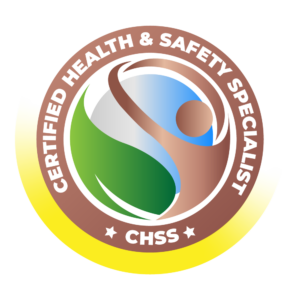Certified Safety Professional – CSP Overview
COMING SOON…..

The Certified Safety Professional (CSP) Exam Question Bank consists of multiple-choice questions. The students will be able to assess their knowledge and ability to finish the exam with the required score by practicing 700+ questions in four simulation exams to be completed in 5.30 hours each. The simulation exams work with the latest version of the Certified Safety Professional (CSP) knowledge domain. A CSP candidate’s professional practice may involve, among other things, putting safety management systems into place, conducting risk assessments at the workplace, identifying potential hazards and controls, analyzing risks and hazard control measures, looking into incidents, keeping and analyzing incident and loss records, and creating emergency response plans. A CSP may also be in charge of SH&E programs for up to 1,000 employees or more as part of their environmental management system duties. This level of responsibility for safety is present in almost every business, including manufacturing, construction, healthcare, insurance, and petroleum exploration, production, and refining. Krishnaji Pawar, CEO and founder of Beyond Smart Cities, prepared the 700+ practice questions with NEW CSP-Key Terminology Flash Cards (100+ key terminology flash cards!). specializes in developing sustainable design strategies for Green Building Certification Systems (LEED, GSAS, ACP, ISO 14001:2015, etc.), Energy Management, Energy Efficiency, Energy Audit, Building Commissioning, Environmental Impact Assessment, and Environmental Management Systems. This course aims to enhance the awareness and effectiveness of safety professionals, including CSP aspirants, officers, engineers, trainers, graduates, HSE officials, consultants, contractors, and service company professionals, in identifying and implementing effective safety strategies. The Board of Certified Safety Professionals (BCSP) offers professional certifications to safety practitioners, which serve as evidence of their expertise and contribute to the progression of their professional trajectories. These credentials not only enhance the careers of established professionals but also contribute to the safeguarding of our workplaces, communities, and the environment. Certified Safety Professionals (CSPs) are individuals who fulfill a minimum of 50% of the safety responsibilities typically associated with professionals. These responsibilities include conducting risk assessments on construction sites, evaluating potential hazards and controls, assessing risks and hazard control measures, investigating incidents, maintaining and analyzing records of incidents and losses, and developing emergency response plans. Additional duties may encompass risk assessment, record maintenance, emergency response, oversight of safety programs, control of health hazards, ergonomics, hazardous materials management, environmental protection, training, accident and incident investigation, management counsel, record keeping, emergency response, oversight of safety programs, product safety, and security (as defined by BCSP). Learning Objectives
- Over 700+ questions in five practice exams range from easy to hard to specialist.
- Understand each question’s reasoning and related knowledge area to restudy or revise.
- Use engineering concepts for OSH, occupational health, and fire protection.
- Identify legal and regulatory issues in OSH and security.
- Understand each question’s reasoning and related knowledge area to restudy or revise.
- Recognize strategies and make smart choices.
- Experience the CSP exam.
- Consider the practice test part of your education.
The main objective of this course is to equip participants with the essential knowledge and skills required to successfully pass the Certified Safety Professional (CSP) examination, which is conducted by the Board of Certified Safety Professionals (BCSP). Other related courses
ISO 45001 Lead Auditor Refresher
 This ISO 45001 Lead Auditor Refresher training teaches how to evaluate ISO 45001-based processes and report on them. You’ll learn how to start an audit, prepare and conduct audit activities, create and disseminate audit reports, and follow-up. Key Learning Objectives
This ISO 45001 Lead Auditor Refresher training teaches how to evaluate ISO 45001-based processes and report on them. You’ll learn how to start an audit, prepare and conduct audit activities, create and disseminate audit reports, and follow-up. Key Learning Objectives
- Learn the basics of OH&S ISO 45001:2018 and ISO 19011:2018 audits.
- To improve OH&S performance, evaluate an organization’s management system using ISO 45001:2018 criteria.
- Implement and manage the OH&S audit according to ISO 19011.
- Sample OH&S paperwork from an organization can help you understand its needs.
- ISO 45001:2018-compliant process development and improvement will give a competitive edge.
- Will educate company employees about OH&SMS.
The ISO 45001:2018 global standard delineates the stipulations pertaining to the establishment, implementation, upkeep, and ongoing enhancement of an occupational health and safety management system within the organizational framework.



